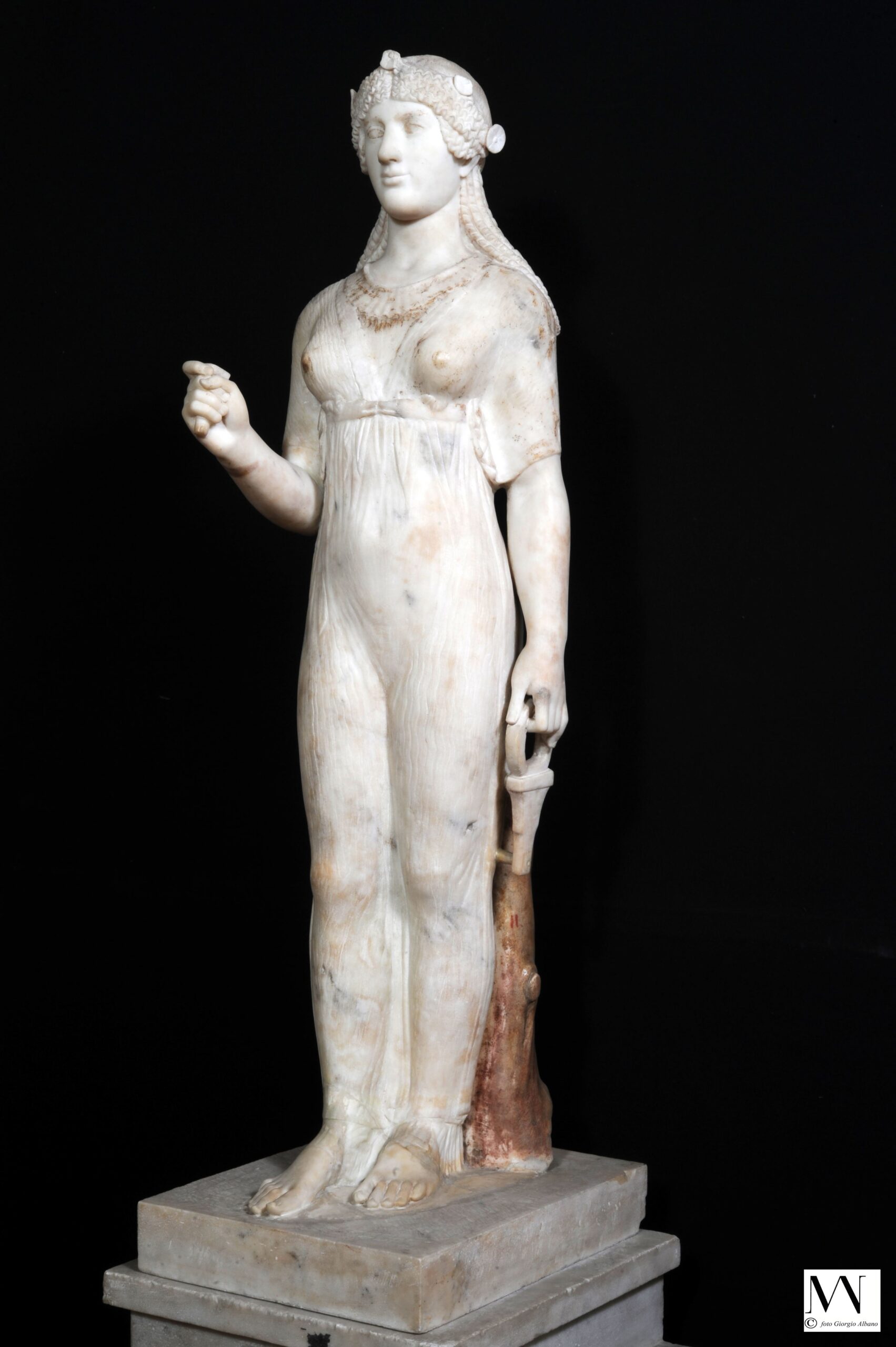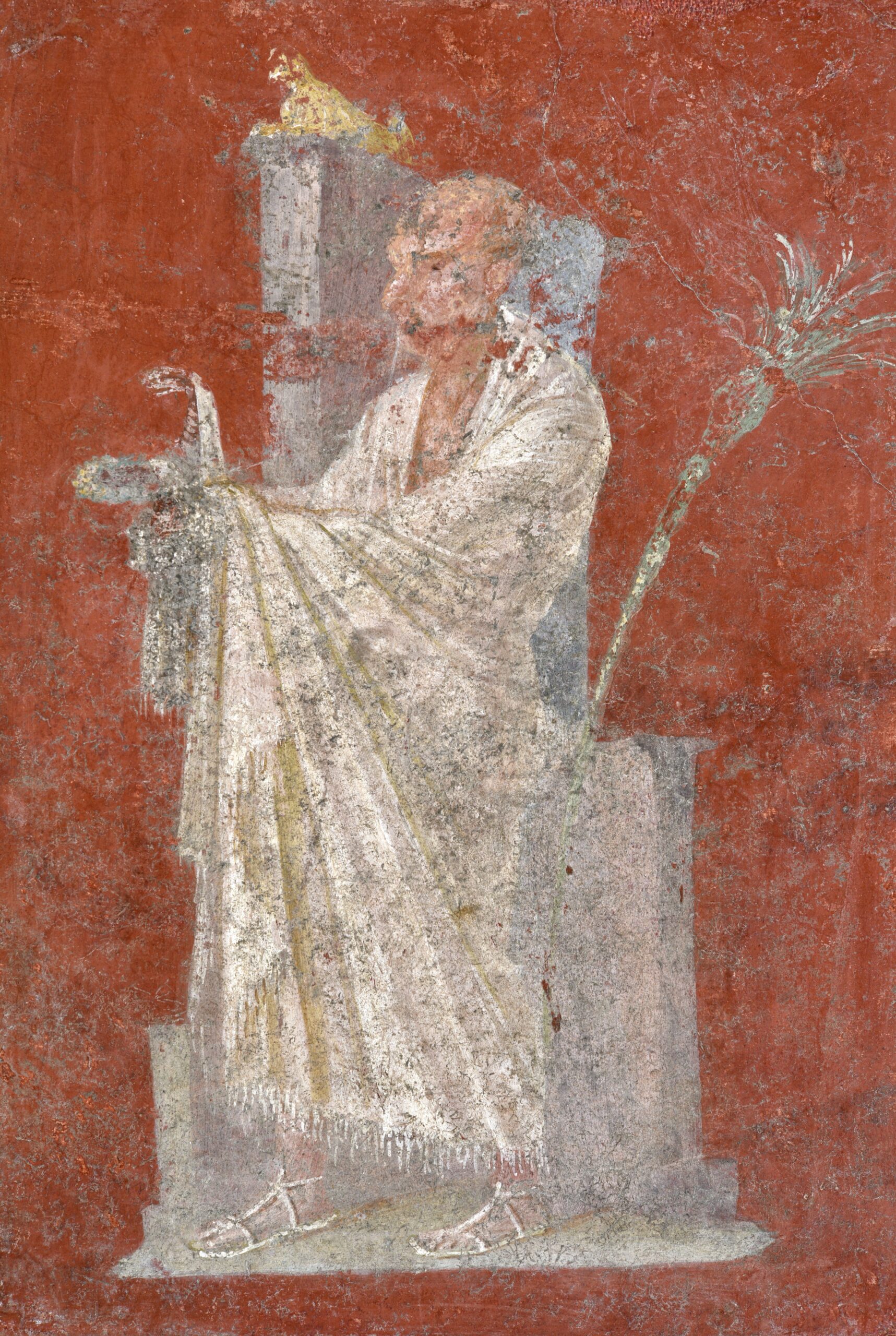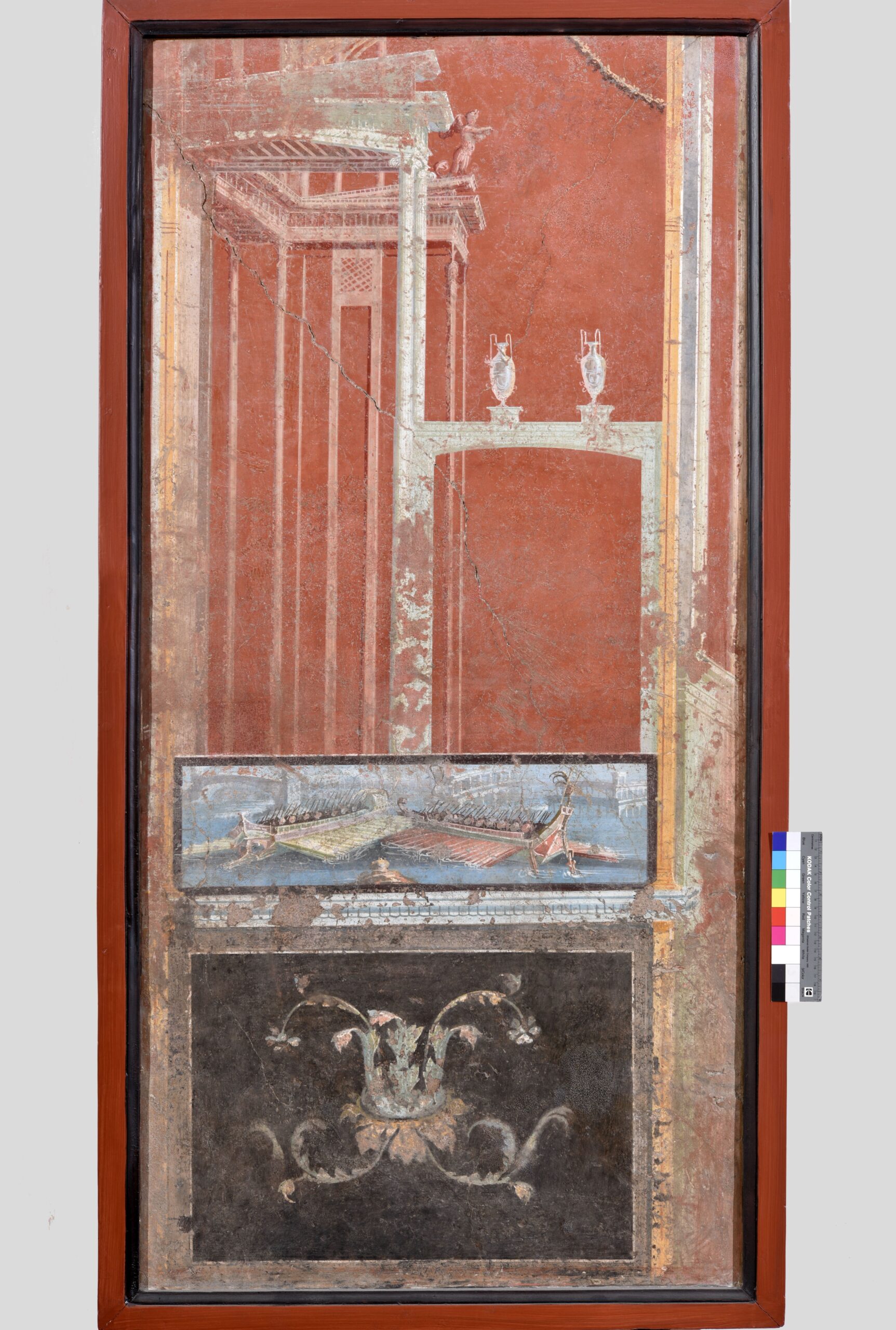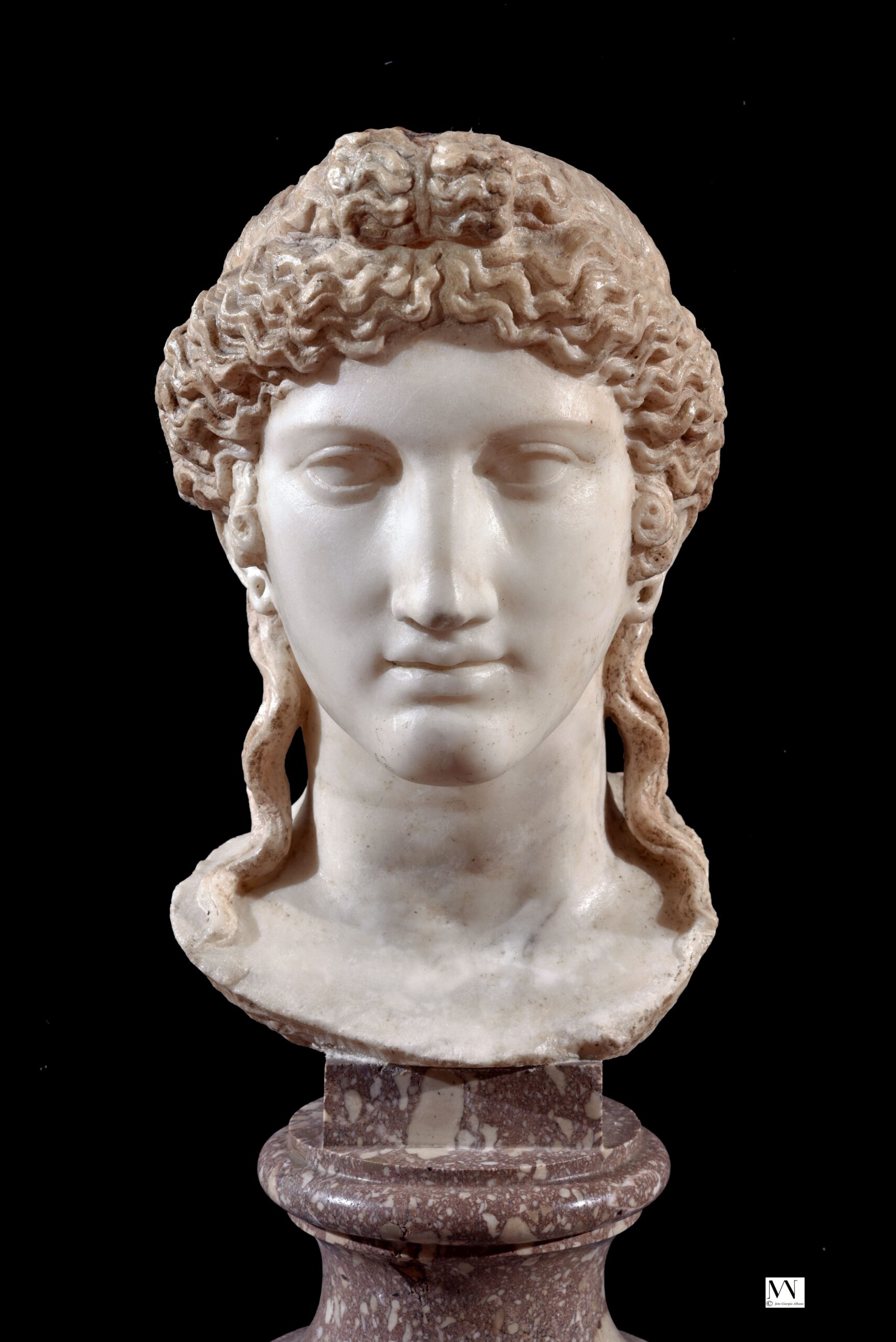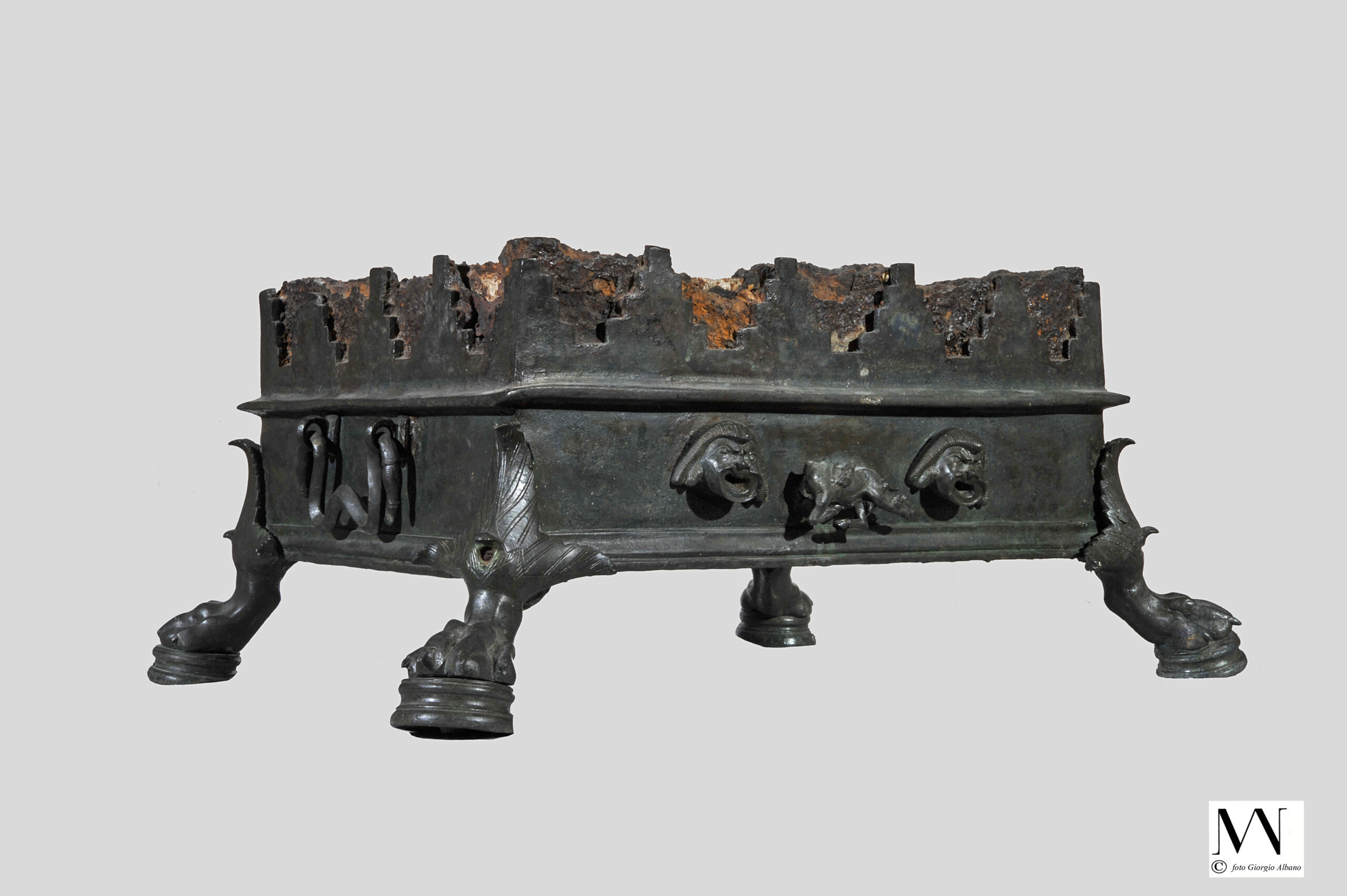Temple of Isis
The gallery of the Temple of Isis ideally exhibits all the materials from a single archaeological context, but also attempts to evoke the perception of the ancient monument at the time it came to light in 1764. It was the first religious building to be excavated at Pompeii and its wall paintings were incredibly well-preserved. These two elements spurred an extraordinary attention for the monument, which in turn led to a systematic work of graphic documentation: room 79 displays a modern scale model of the temple and historical drawings, as well as etched copper plates, which meticulously reproduce the unearthed structures and decorations.
Two rooms are dedicated to the portico of the building, which yielded the most considerable amount of wall decoration fragments in the whole collection: the various elements of wall decoration (the base, the pictures with architectural landscapes in the central section, the continuous frieze with wreaths on a black background and the decoration with various subjects on a white background on the top) appear on the gallery’s walls, proportionally at the same height of their original position. Room 82 exhibits the marble inscription - pulled from the top of the entrance door to the sanctuary - which records the reconstruction of the temple after the 62 AD earthquake, financed by Numerius Popidius Celsinus.
The decoration of the ekklesiasterion, the room were initiation ceremonies took place, evokes more openly the cult, represented both in the depiction of Io’s stories, as well as in the decorative elements of the bases and the architectural landscapes. Like in the other rooms of the gallery, the focus is not only on paintings but also on cult objects, furniture and sculptures found in the building. In the last room, the paintings from the sacrarium make up a sort of illustrated book on the fundamental concepts of the Isiac religion.
